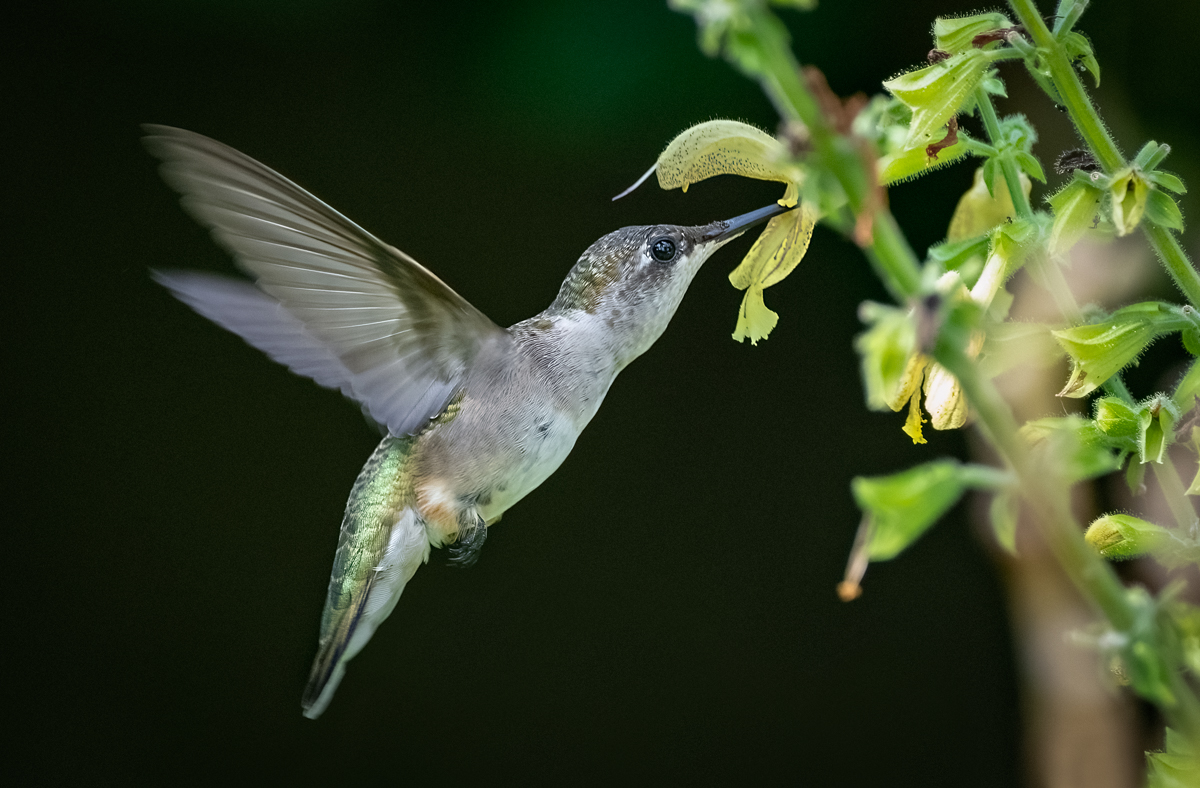
Hummingbirds can be inquisitive birds showing little concern for proximity from us, so you may be lucky enough to observe these whirring avian engines up close and personal. If you have, then you’d have marvelled at the simply stunning aerial aptitude this little bird has, with one specific ability making it unique among all birds.
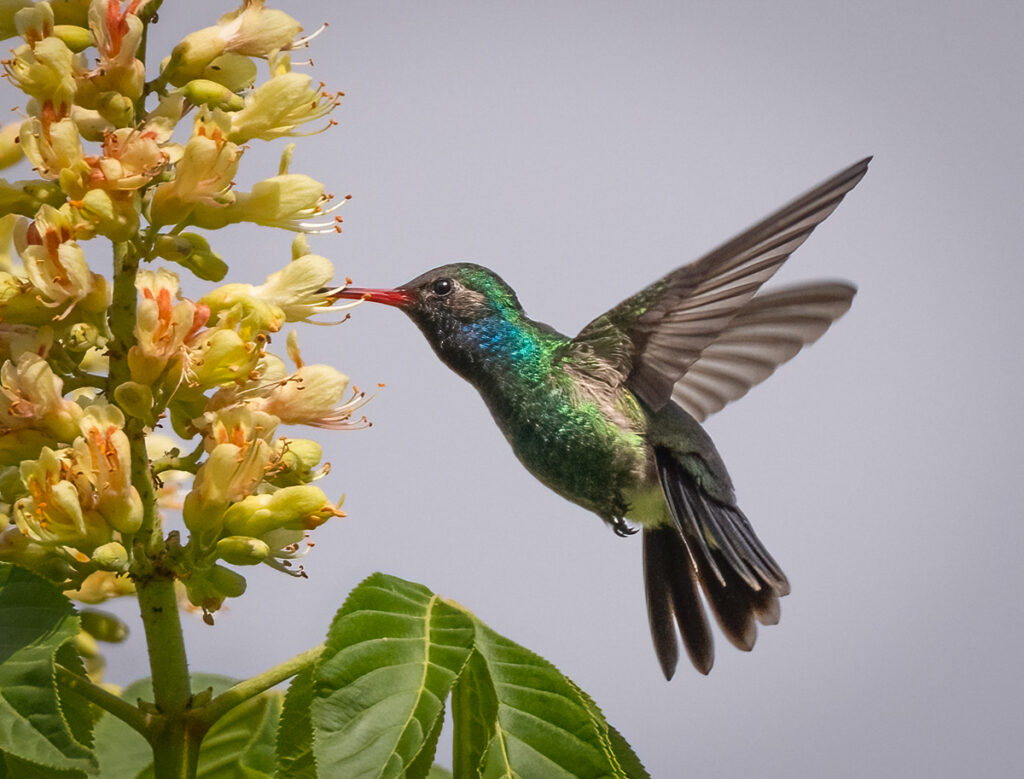
The world’s smallest migrating bird – smaller than many insects – is arguably the most impressive when it comes to flight. There are currently over 350 known species of hummingbird in the Trochilidae family, with more being added each year as genetic research advances, but each species has the same claim to fame – they can all fly backwards.
Caught on Camera
Many animals can move backwards if they need to, but this is not a frequent occurrence, often only to evade threats or get out of a tight spot. However, hummingbirds use this ability constantly during their everyday manoeuvres through the air. They can also hover far longer than any other “short-term” hoverer like kestrels, and they can move sideways and straight up. Almost as if they were showing off, hummingbirds also sometimes employ backward somersaults during their everlasting hunt for food.
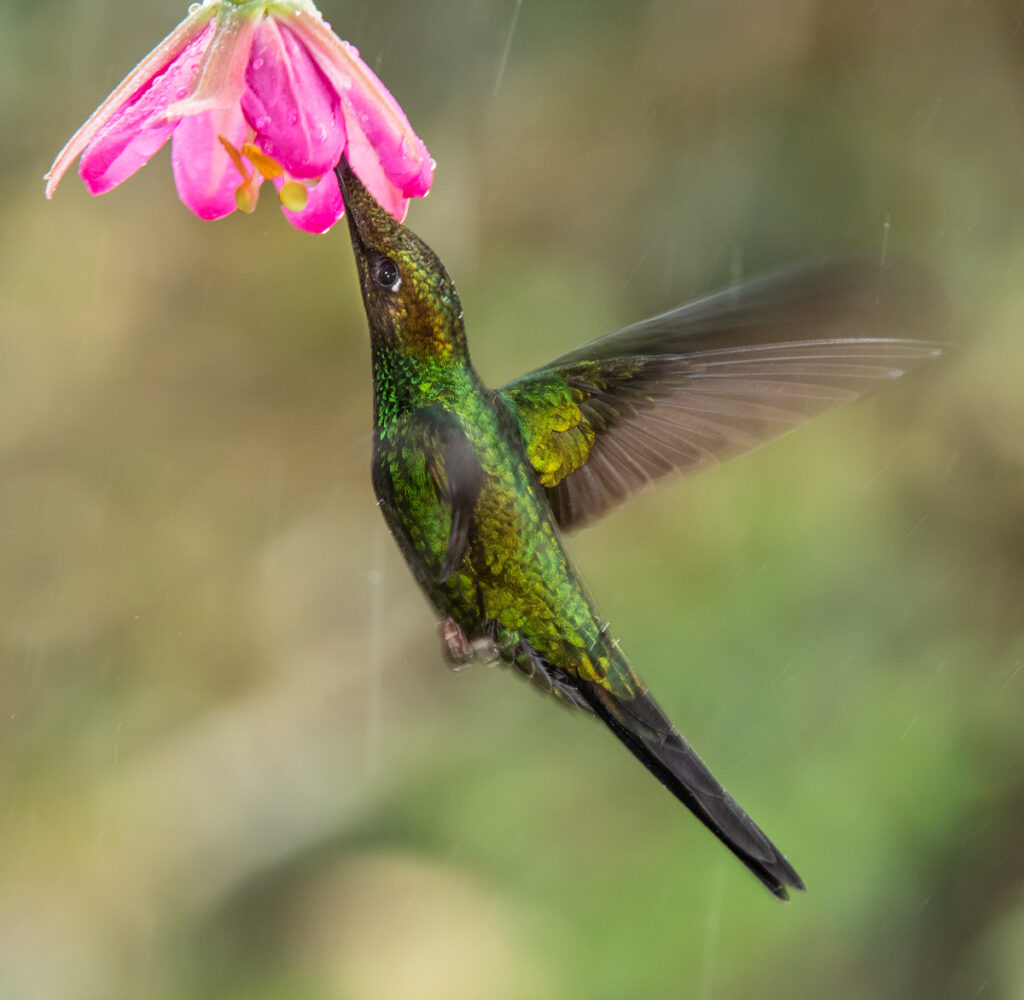
Beating their wings on average anywhere between 50 and 80 times a minute during normal flight and 200 times when diving, the arrangement of muscles and tendons along a hummer skeleton enables these acrobatics. High-speed filming and other techniques have managed to track the patterns of the air currents around their wings to understand the phenomena. Slowed-down footage of a hummer in flight shows us how the bird uses a seemingly simple technique to maneuver. Whilst there are physiological adaptations at play such as a longer and stronger “finger bone” along the top of the wing that allows for finer direction control, fused, hollow bones making the bird light and easy to turn, and pectoral muscles making up 25% of their body weight, much more than all other birds, these adaptations are only half of the story behind hummingbird flight.
It’s All in the Shoulder
Unlike other birds who generate lift from the downstrokes of their wings, hummers can move their wings through a 180° pivot at the shoulder, rotating the wing in a figure-8 pattern, creating lift on both the downward and upward stroke. This enables it to hover. The bird can now make the slightest twist of its tiny body, changing the angle of the wing, which then can shift the bird in any direction, no matter where the wing is in its stroke pattern. Hence up, down, sideways, and backwards.
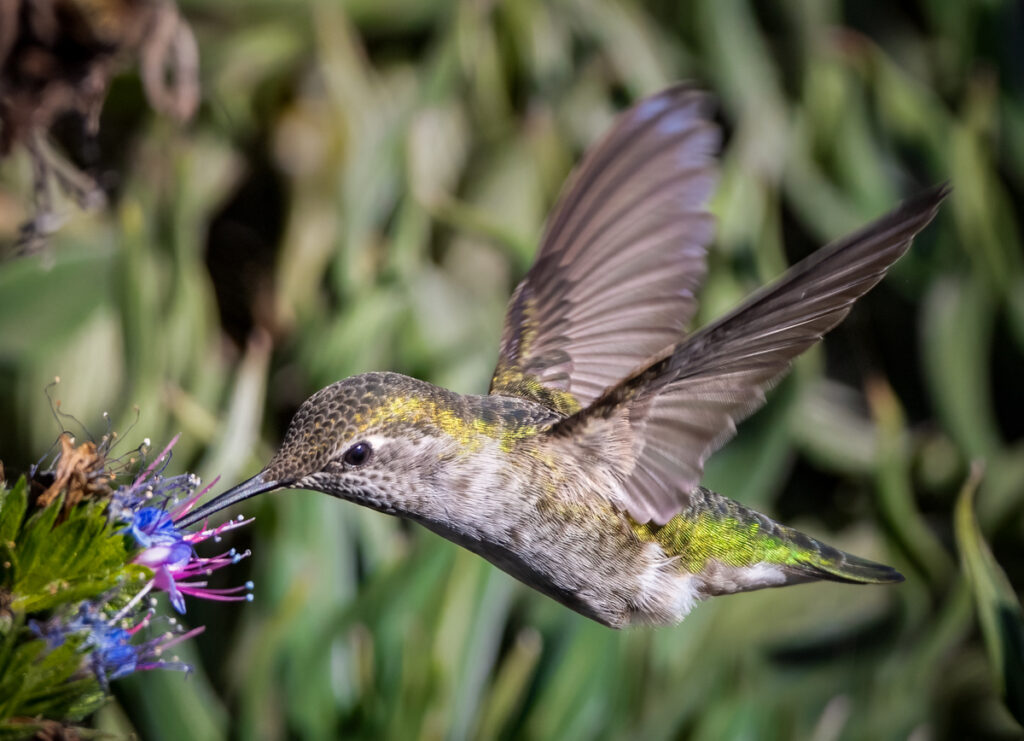
Going the Distance
The Ruby-throated hummingbird is a common species often seen in gardens and parks along the eastern United States, seeking out the nectar from trumpet creepers, petunias and jewelweed as they go. This iridescent green and white bird weighs no more than 3 grams, yet Shakespeare’s quote “Though she be but little, she is fierce” is perhaps most apt here. A 2016 study into their annual fall migration showed that their stamina only increases as they get older. Using data collected on almost 3,000 individuals between late August and early October, the study found that older birds arrived earlier and in better condition, but not only that, their endurance was in no doubt – these birds could fly over 2,200 kilometres in a single flight. This feat is even more remarkable if you consider that all migrants must effectively double their body mass to create energy reserves to complete migration.
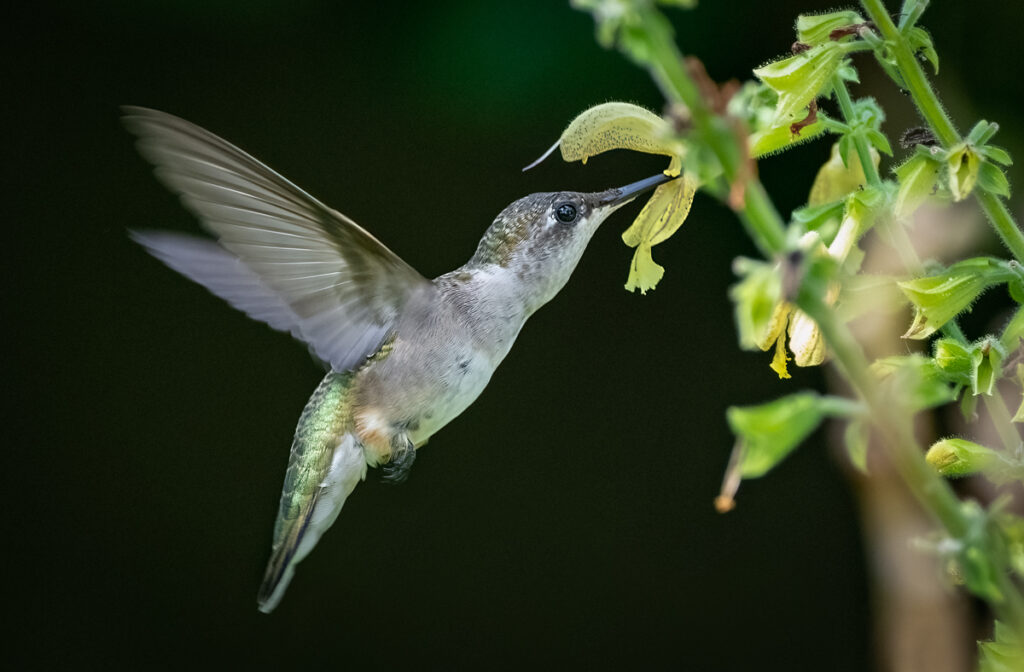
Follow the Flight
As if these wonders-in-miniature weren’t fascinating enough with their sparkling plumage and almost military dedication to finding their food source, understanding the superb flight ability of these airborne jewels can help you become a better birder. It can be tricky anticipating just which way these birds will go next, but with practice, you can prepare yourself and your camera to capture a unique flight not seen anywhere else in the world of birds.


